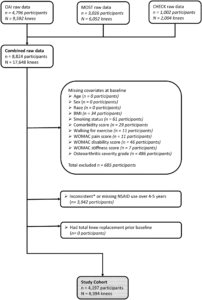Optical Coherence Tomography (OCT)
What Is Optical Coherence Tomography (OCT)?
Optical Coherence Tomography (OCT) is a noninvasive diagnostic imaging technique that captures high-resolution, cross-sectional images of the retina. Unlike ultrasound, which uses sound waves, OCT relies on light waves to visualize internal structures of the eye, offering extraordinary detail—down to individual layers of the retina. This imaging is especially useful for assessing diseases that affect the optic nerve and retinal health.
How OCT Works During an Eye Exam
OCT is often used by optometrists and ophthalmologists to examine key structures at the back of the eye, including the retina, macula, optic nerve, and choroid. Traditional methods may not offer the precision needed to detect subtle abnormalities. OCT fills that gap by allowing practitioners to see below the surface and evaluate the finer structures that are otherwise difficult to observe.
OCT as the “Optical Ultrasound”
Often dubbed an “optical ultrasound,” OCT delivers incredibly detailed images—often with a resolution better than 10 microns. This level of precision surpasses that of MRI or traditional ultrasound. With such clarity, clinicians can detect which retinal layer is affected by fluid buildup or swelling, and monitor how these issues evolve over time.
The Science Behind OCT Imaging
OCT technology uses a method called interferometry. It directs near-infrared light into the eye, which reflects off different layers of tissue. These light reflections are then analyzed to create detailed images up to 2–3 millimeters beneath the surface. Typically, the scan is performed through a natural, transparent part of the eye such as the cornea. The light used is completely safe and does not harm the eye.
What To Expect During an OCT Procedure
An OCT scan is quick, easy, and painless. Here’s a step-by-step overview of what you can expect:
-
You’ll be asked to rest your head on a support stand.
-
The technician will calibrate the machine.
-
You’ll focus your gaze on a small light within the device.
-
Without touching your eye, the machine will scan and capture images.
-
The process typically takes 5–10 minutes.
-
In some cases, eye drops may be used to dilate your pupils for better imaging of specific areas.
Conditions Detected Through OCT
OCT is highly effective in diagnosing and monitoring a wide range of eye conditions, including:
-
Diabetic retinopathy
-
Glaucoma
-
Macular degeneration
-
Macular holes
-
Macular pucker (also called epiretinal membrane or cellophane maculopathy)
-
Macular telangiectasia (Type 2)
-
Central serous retinopathy
-
Central Retinal Artery Occlusion (CRAO)
Final Thoughts on OCT Imaging
OCT is a vital, noninvasive tool for obtaining detailed images of the retina using light instead of sound. The entire procedure takes less than 10 minutes and plays a crucial role in the early detection and treatment of numerous eye diseases.
Frequently Asked Questions
What eye problems can OCT detect?
We’re preparing a detailed FAQ section to address this and more. Stay tuned for expert insights!
Expert Tips
-
Schedule regular eye exams, especially if you have diabetes or a family history of eye disease.
-
Ask your doctor if OCT is recommended for your condition.
-
OCT results can help track treatment progress and detect issues before symptoms appear.
Key Takeaways
-
OCT provides high-definition images of the retina using light waves.
-
It’s quick, safe, and effective for diagnosing many eye conditions.
-
OCT allows eye care professionals to detect problems early and tailor treatment accordingly.
Join Our Eye Health Community
Looking for more eye care tips and vision-saving advice? Subscribe to our newsletter and get the latest updates delivered straight to your inbox.
Subscribe Now






